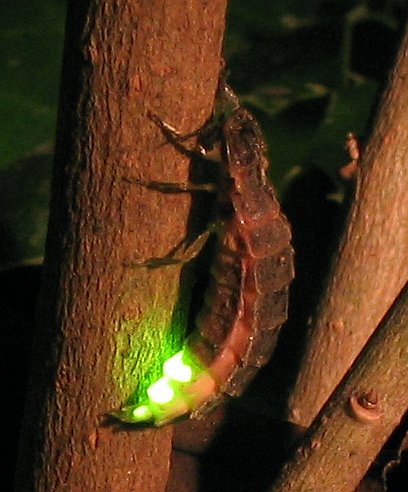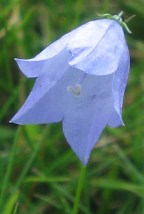Down By The Sea – The Wildlife Gardener Abroad
By Ruth D’Alessandro, The Wildlife Gardener The Wildlife Gardener’s favourite landscape is chalk downland. She lives in it, walks through it, gardens on it, raises a family on it. So this August, for a change, la famille Wildlife Gardener went on holiday to…another bit of chalk downland. To the Isle of Wight, home spiritual and temporal of The Ranger and The Cat, and the downland, a close cousin of our own North Downs. I maintain that on every countryside walk you do, you always see something new and interesting, and thus it was when The Ranger treated us to a night-time chalky walk. We were not disappointed: spooky lights in the vegetation! What on earth were they? Glow-worms! I have always wanted to see glow worms, and there they were ” single points of light in the bushes. Glow worms are beetles, members of the Lampyridae (yes, really) and their luminescence comes from a chemical reaction they create in their own bodies, involving the vividly-named protein, luciferin. The beetle can switch its light on and off as required, by increasing and decreasing the air (and hence oxygen) supply to the luciferin. At night, the 25mm long and wingless female glow worm switches on the lamp at the end of her abdomen, attracts a roving male, copulates, switches off her lamp, lays eggs, then dies. A short but spectacular life.

Glow worms, though not common, are found all over England, although they are best-known from chalk and limestone areas. One way to find out about the habitat you’re walking through is to watch out for indicator species. An indicator species may be a plant or an animal, and its presence, or absence, gives clues about the environmental conditions in that area. So if you see these plants:




…and these butterflies:



…you are in an area of chalk downland. Although you might have noticed the big white cliffs first, which are a bit of a giveaway. The soil on downland is thin, and nutrients are washed out of the soil down through the chalk. So plants need to be small and tough to succeed there. When you go for a downland walk, don’t just look at the skylarks. Take a moment to crawl around on the grass ” the exquisiteness of the tiny ecosystem will astonish you.
- Spurn Spawn! - 26th February, 2014
- Bluebells on wheels: axles of evil? - 2nd February, 2011
- Raising the ba: Wildlife and the Ancient Egyptian Book of the Dead - 8th January, 2011

Hi Clare! Would be happy to oblige you with a downland walk whenever!
Love the glow-worm picture… somehow I didn’t think they lived in the UK. I’d love to see one. Probably not spending enough time on chalk downland at night !
Steve – next time I am on a dowland walk I shall be sniffing the vegetation as well as crawling on it! Love your piece about the Burren – we went there last year.
You must tell us just how large the glow worm is in the picture. It looks like it is on a tree trunk in the picture which would seem to make it a few inches in length, which would be a really scary bug. Searches on the web suggest 1.5cm. Which is it?
In the United States we have fireflies. Those is our most famous, and I think only, glowing summer insect.
The Ranger responds: a good point – apologies! The female – which this is – is up to 25 mm long, and this image is of a fully grown one so it’s fairly safe to assume that it’s some 25 mm in length, about an inch for old people.
A good article, based on the principle that the beauty of chalk downland is best seen ‘up close’.
The variety present in the downland sward is marvellous, and close inspection also rewards with herbal scents.